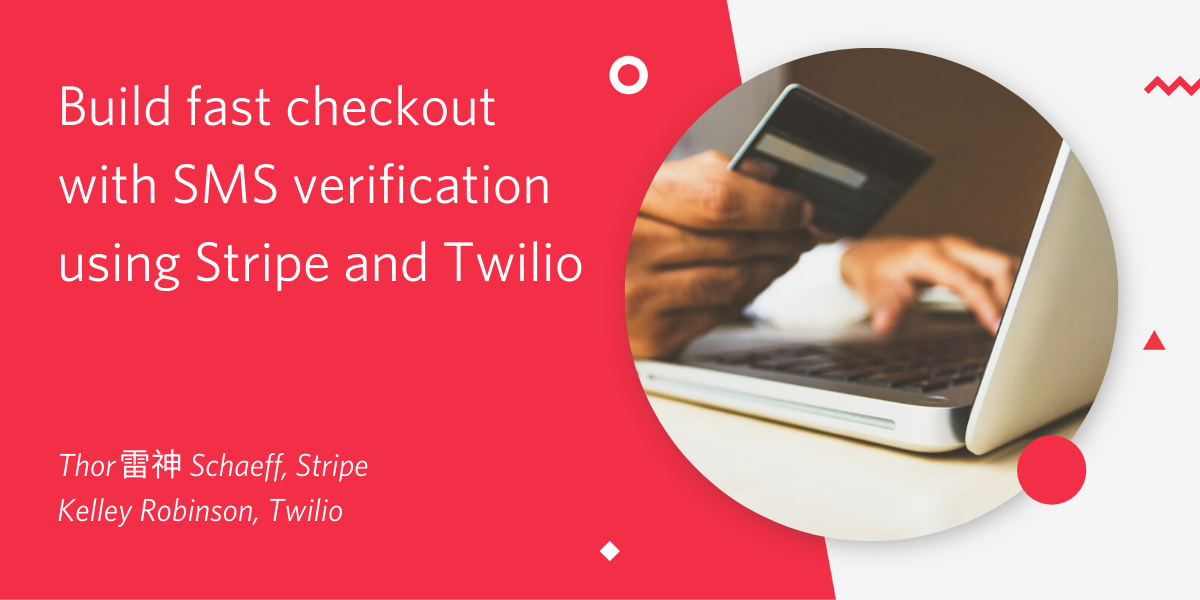Build fast checkout with SMS verification using Stripe and Twilio
Time to read:

Stripe and Twilio have teamed up to build a sample application that shows you how to securely collect and store payment details from your customers and use Twilio Verify to send returning customers an authentication code before charging their saved card details.
Demo and resources
Creating the sample with the Stripe CLI
Setting up the environment variables
A look at the source code
Setting up an international phone number input field
Look up the phone number on the server
Collect and store the customer's payment details
Send the verification code
Check the verification code
Charge the customer
Listen to Stripe webhook events
Related Posts
Related Resources
Twilio Docs
From APIs to SDKs to sample apps
API reference documentation, SDKs, helper libraries, quickstarts, and tutorials for your language and platform.
Resource Center
The latest ebooks, industry reports, and webinars
Learn from customer engagement experts to improve your own communication.
Ahoy
Twilio's developer community hub
Best practices, code samples, and inspiration to build communications and digital engagement experiences.


